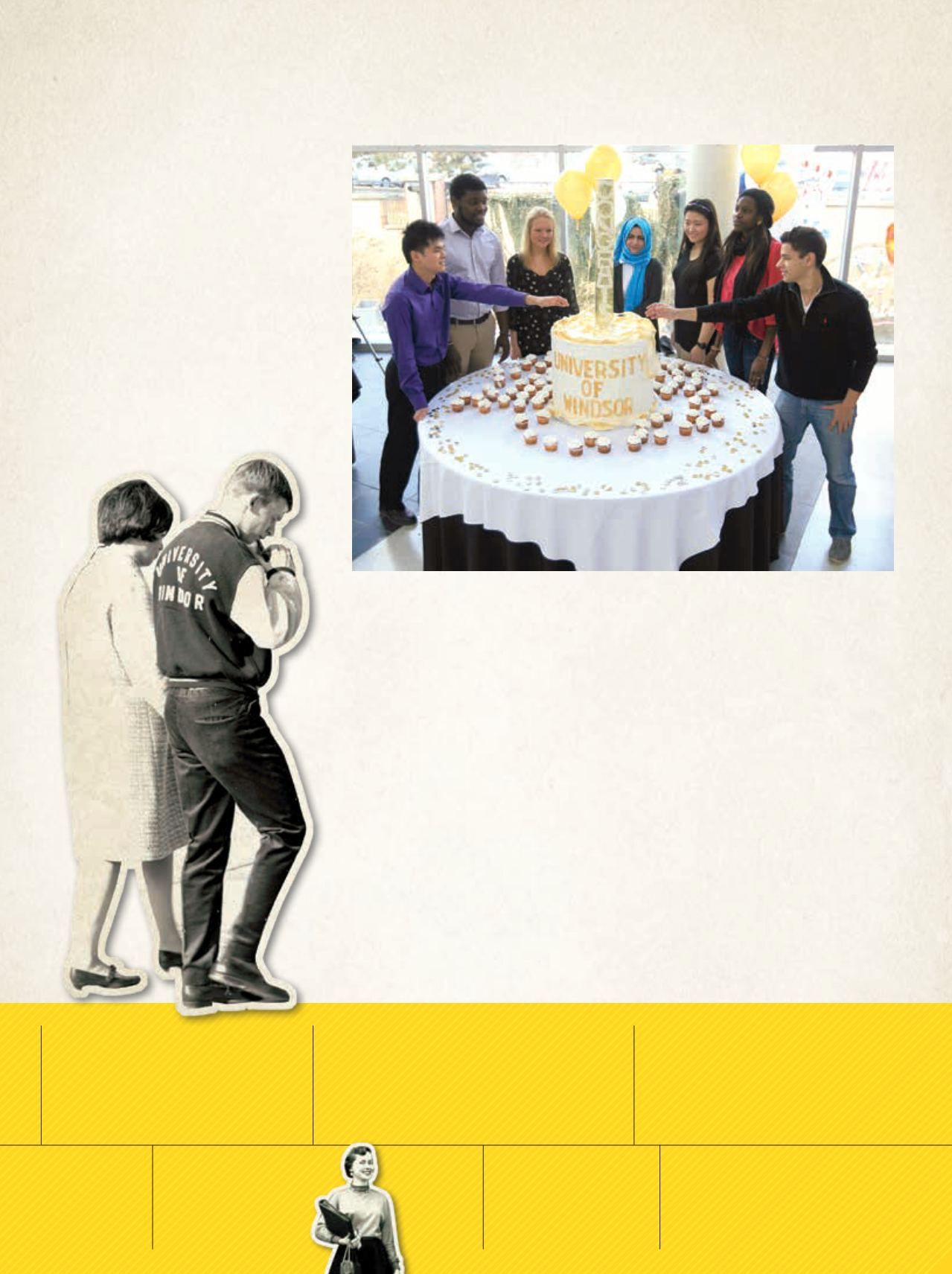
16
“I remember the posters said something
like, we were changing the name but
the school would remain the same,” says
Cascadden. Despite the low-key July 1
ceremony though, she remembers a sense
that “the University was going to really
explode with growth.”
The campus of Cascadden’s day was
home to Dillon, Memorial and St. Denis
Halls, where students dressed in sport coats
and dresses to cheer on the basketball team.
Professors chatted with students over coffee
at the University Centre.
A Bachelor of Arts student majoring in
home economics and English, Cascadden
paid $465 for one year’s tuition. She still
recalls her awe at the amphitheatre-style
classroom in the brand-new Essex Hall
building where first-year students sat
through English and psychology lectures.
“Those classrooms could fit 100 people.
We’d never been in a class that could hold
more than 30.”
In 1963, the campus population barely
comprised a thousand students. “I think I
knew everyone,” says the alumna. “When
there was a dance or a game, all the students
would go. Life on campus was a lot of fun.”
As a public institution and a regional
university, however, the new University of
Windsor made a postsecondary education
more accessible, spurring a significant
enrolment spike. From 1967-77 alone, its
population ballooned from approximately
1,500 to 8,000 full-time students. Today,
more than 16,500 students from 90
countries around the world call the campus
their home.
The Reverend Eugene Lebel, the
first president and vice-chancellor of
the University of Windsor, and Father
Norbert Ruth, its first dean of Arts and
Science, stood as the architects of the
institutional transformation. Following
in their place, a succession of dedicated
leaders steered the University through
periods of growth and challenge.
As the decades progressed, the
academic programs of the small, liberal
1957
Canterbury College, offering courses in Philosophy,
Religious Knowledge and Mediaeval History,
became the first Anglican college in the world to
affiliate with a Roman Catholic university when it
joined Assumption University.
1950
In 1950, the campus
welcomed its first
female students.
1962
On December 19, 1962, the University of Windsor
was incorporated by the Ontario Legislature,
accepting Assumption University in Federation.
1956
In 1956, the College
changed its name to
Assumption University.
1857
In September of 1857,
Assumption College welcomes
its first students.
In March 2013, students restaged the photograph originally taken in 1963 (shown on page 15) that celebrated
the University’s formal birth.
1953
On July 1, 1953, Assumption College ended
its affiliation with the University of Western
Ontario and obtained its own university
powers through an Act of the Ontario
Legislature.


